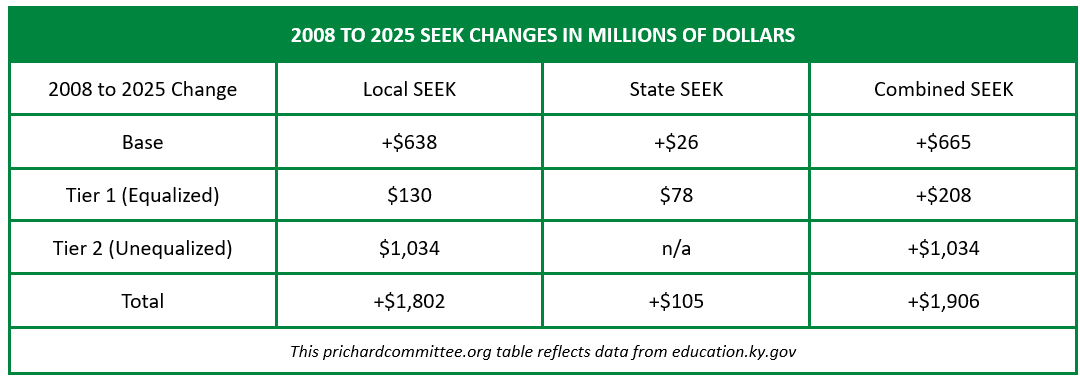Postsecondary learning is increasingly important to economic prosperity, both for individual Kentuckians and for the commonwealth as a whole. Are young residents moving toward the degrees and other credentials that can set them up for that success?
Here, I’ll offer an approximate look at the “pipeline” from starting high school to undergraduate attainment, I'll begin with this quick graphic, suggesting that of 100 students who entered our public high schools in the fall of 2012 as few as 40 may have earned a degree or credential from a public institution by the spring of 2022.

How was this approximation built?
The first two numbers reflect four-year graduation data from KDE (the Kentucky Department of Education) and its School Report Card data. Those reports are based on the number of students in an entering public high school cohort and then the number who graduate within four years. The cohort count is adjusted for students who move in and out of the school system. The 2016 four year graduation rate translates directly as 89 of 100 entering students graduated within four years.
The third number starts with the college-going rate from High School Feedback Reports issued by KyStats (the Kentucky Center for Statistics). Those Feedback Reports include the percent of graduates from each public school district who enroll in KCTCS, public universities, or AIKCU institutions (AIKCU is the Association of Independent Kentucky Colleges and Universities). I multiplied that KyStats college-going rate by KDE’s graduate count, and then converted to the per 100 scale.
The final number begins with CPE (Council on Postsecondary Education) reports of students earning undergraduate certificates and degrees, and then narrowed that count to show only graduates ages 18-24 with Kentucky origins. As a further adjustment, I reduced that number by 12% to roughly factor out graduates of Kentucky private high schools—and then converted to the per 100 scale.
For a fuller look at the data, download this one-pager showing the statistics and the sources.
What are the weaknesses in this method?
Again, this is a first approximation, working with incomplete data. Here are three important limitations:
- The college-going count is limited to public and AIKCU institutions, meaning it does not show out-of-state enrollment or students who choose proprietary schools.
- The college-going count is also based on enrollment within one year of leaving high school, so students who work for a year or more before taking next steps are not included.
- The credential and degree count is based on the sixth year after high school graduation, but we know that many students finish certificates, associate degrees, and even baccalaureate degrees in much less than six years. I paired 2016 high school counts and 2022 postsecondary counts to stay roughly in line with the common practice of reporting six-year graduation rates from four-year programs. That’s definitely an incomplete approximation, even though it’s the best one could produce from the published data.
What Matters Here?
40 of 100 students entering grade 9 achieve a credential within 10 years? Even as an approximation, that should make us blink. It isn't a good sign for our efforts to reach a statewide goal. 60% attainment for Kentuckians aged 25-64. Of course, we can make part of that progress through older Kentuckians returning to school, Kentuckians studying out-of-state coming home, new folks bringing their talents into our community, and the contributions of those proprietary institutions. But if our most direct pipeline is only working for 40 of 100, that's a sign that we need to improve that pipeline as well.
Seeing student group versions of the same approximation should add to our concern. Below, I’ll share versions for male, female, African American, Hispanic or Latino, and white students. Only 33 male students of 100, compared to 47 female students? Only 19 of 100 African American students? To build our big bold future, we need to knit together strategies and cultures that welcome and empower many more young adults of every background.
Finally, these approximations should raise our interest in more precise studies. We can use longitudinal data to track students by anonymous unique identifiers as they move from system to system, and a big promise of the KyStats data system is that it can allow us to follow learners from the KDE records to those maintained by CPE. This limited attempt suggests that 40 of 100 ninth-graders make it to a credential in ten years, but we have the data to check that approximation and see our challenges more clearly. Let’s study, inform, and advocate for the higher attainment we need.

















